10 Essential Items You'll Need to Survive in the Desert
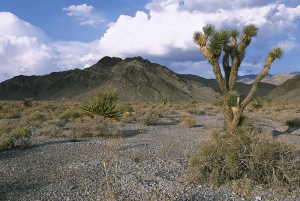 Most preppers know which basic supplies are needed to survive in the
wild. Things like waters filters, knives canteens, and food are a given
in any survival situation, but sometimes the basics aren't enough. Our
planet is host to a wide range of extremely hostile environments, which
would-be survivors may need specialized equipment to survive in. With
that said, it could be argued that no climb or place is more difficult
to overcome than the desert.
Most preppers know which basic supplies are needed to survive in the
wild. Things like waters filters, knives canteens, and food are a given
in any survival situation, but sometimes the basics aren't enough. Our
planet is host to a wide range of extremely hostile environments, which
would-be survivors may need specialized equipment to survive in. With
that said, it could be argued that no climb or place is more difficult
to overcome than the desert.
Between the blistering heat, rough terrain, and lack of water and game, the desert presents peculiar challenges that are not seen anywhere else. The standard pack that you might take to the forest, while probably sufficient for most environments, may be severely lacking in the desert. So if you're planning on hiking or camping in the desert any time soon, here's a few items that you should definitely take with you.
The desert may be dry, but it isn't completely devoid of water. If you know where to look, you can find springs and leftover pools from the last rainstorm. Like any wild source of water though, it's probably not safe for human consumption.
Keep in mind that if you expect to be in the desert for any significant period of time, you're not going to be able to carry all the water you need. Finding and cleaning the water from your environment is going to be crucial to your survival, so your best option will likely be a water pump, like the Katadyn Water Filter. This lightweight device can instantly clean up to 2 quarts of water per minute, and each filter (which usually cost around 5 bucks each) can filter 500 gallons of water before needing a replacement.
And since finding water in this environment is an especially daunting task, you'll be needing some expert advice before any trek through the desert. I'd highly recommend The Secret Knowledge of Water by Craig Childs. Not only does the author speak at length on the subject of finding water in the dry regions of America's Southwest, but he has quite a bit to say on the dangers of flash floods as well. The desert is a harsh mistress that is prone to extremes, and he describes how to read the land, figure out where water has been in the past, and where it will show up again after the next rainfall. It's an essential read for anyone daring enough to enter the desert.
Instead, I would recommend several flexible Nalgene canteens. Each one carries around 3/4 of a gallon, and are made of a strong yet malleable plastic. You can carry several gallons on your back, or roll them up and stuff them in your pocket when you're running low.
So not only will you need loose, lightly colored clothing during the day (preferably made of cotton or hemp), but you'll also need something that that will keep you warm at night. One of the best things you can wear is a wool sweater to preserve your core temperature, and some toasty wool socks, which will go a long way towards helping you sleep.
So to compliment your sleeping bag, find yourself a self inflating sleeping pad like the ALPS Mountaineering Air Pad. Made from polyurethane open cell foam, it can be rolled into a very tight shape for safe keeping, but when you lay it out on the ground it will expand and fill itself with air (an excellent insulator). Don't even think about entering the wilderness without it, or something similar.
Personally I prefer to cover my skin, and for very good reason. Sunscreen protects you from sunburns, but doesn't really keep you cool. If I were in the desert, I would only apply some to my face to protect my skin from the light reflecting off the dirt and sand.
If done properly, clothing that is fitted loosely and lightly colored will make you feel like you're walking in the shade at all times. And one of the best articles of clothing you take to the desert is the shemagh. This middle eastern attire is designed to protect your face, neck and chest from the sun, and has the added benefit of protecting your mouth and nose from the dusty conditions that are so common in the desert. While it's become widely known as a fashion accessory in the West, it is still a very practical garment for any hot and dry conditions.
This can pose serious problems for your heart, liver, and kidneys, and cause you to experience nausea, fatigue, headaches, memory loss, and eventually coma and death. We'll probably never know how many people have died in the desert whilst guzzling gallons of water, which sadly, is an easily avoidable fate if you take the proper measures.
Obviously taking plenty of food with you can prevent this, but as an added measure you might want to consider carrying electrolyte supplements with you into the desert. These pills not only contain sodium, but every other nutrient that is required to keep your body hydrated (especially potassium, which is severely lacking in the American diet). This is a very portable supplement that should be used in addition to food, but could also save your life if you're lacking sustenance.
I would only suggest that you try these supplements in a safer environment before trying them out in the desert. Everyone has different needs when it comes to hydration, and taking too much salt can force your body to retain water, and hurt its ability to shed heat.
While most preppers have spent a lot of time studying the dangers of the wilderness, anyone planning to enter this unforgiving environment should take special care to prepare themselves for its hazards. If you don't know what you're doing, this kind of environment can and will, chew you up and spit you out. Make sure you are in excellent physical condition, read up on survival strategies from people who have actually been there, study the terrain, and plan your routes carefully.
Great gear can significantly better your odds of survival, but knowledge is everything. Without it, no amount of gear, supplements, or technology can save you.
Delivered By Ready Nutrition
 Most preppers know which basic supplies are needed to survive in the
wild. Things like waters filters, knives canteens, and food are a given
in any survival situation, but sometimes the basics aren't enough. Our
planet is host to a wide range of extremely hostile environments, which
would-be survivors may need specialized equipment to survive in. With
that said, it could be argued that no climb or place is more difficult
to overcome than the desert.
Most preppers know which basic supplies are needed to survive in the
wild. Things like waters filters, knives canteens, and food are a given
in any survival situation, but sometimes the basics aren't enough. Our
planet is host to a wide range of extremely hostile environments, which
would-be survivors may need specialized equipment to survive in. With
that said, it could be argued that no climb or place is more difficult
to overcome than the desert.Between the blistering heat, rough terrain, and lack of water and game, the desert presents peculiar challenges that are not seen anywhere else. The standard pack that you might take to the forest, while probably sufficient for most environments, may be severely lacking in the desert. So if you're planning on hiking or camping in the desert any time soon, here's a few items that you should definitely take with you.
Katadyn Vario Water Filter
The desert may be dry, but it isn't completely devoid of water. If you know where to look, you can find springs and leftover pools from the last rainstorm. Like any wild source of water though, it's probably not safe for human consumption.
Keep in mind that if you expect to be in the desert for any significant period of time, you're not going to be able to carry all the water you need. Finding and cleaning the water from your environment is going to be crucial to your survival, so your best option will likely be a water pump, like the Katadyn Water Filter. This lightweight device can instantly clean up to 2 quarts of water per minute, and each filter (which usually cost around 5 bucks each) can filter 500 gallons of water before needing a replacement.
And since finding water in this environment is an especially daunting task, you'll be needing some expert advice before any trek through the desert. I'd highly recommend The Secret Knowledge of Water by Craig Childs. Not only does the author speak at length on the subject of finding water in the dry regions of America's Southwest, but he has quite a bit to say on the dangers of flash floods as well. The desert is a harsh mistress that is prone to extremes, and he describes how to read the land, figure out where water has been in the past, and where it will show up again after the next rainfall. It's an essential read for anyone daring enough to enter the desert.
Flexible Nalgene Canteen
Since you'll be carrying and drinking a lot of water, it stands to reason that you'll need several very large canteens with you at all times. Since the occurrence of water in the desert is often sporadic, you'll need a very large carrying capacity so that you can gather as much water as you can when you come across it. However, you don't want a bunch of bulky gallon jugs taking up precious space.Instead, I would recommend several flexible Nalgene canteens. Each one carries around 3/4 of a gallon, and are made of a strong yet malleable plastic. You can carry several gallons on your back, or roll them up and stuff them in your pocket when you're running low.
Wool Clothing
The desert is an environment known for it's extremes. You can go months without seeing a drop of rain, only to experience a flash flood within minutes, and you can walk for hours without feeling a single breeze, only to find yourself in a blistering dust storm at a moments notice. But more importantly, you can be exposed to extreme heat during the day, and bone chilling sub freezing temperatures at night.So not only will you need loose, lightly colored clothing during the day (preferably made of cotton or hemp), but you'll also need something that that will keep you warm at night. One of the best things you can wear is a wool sweater to preserve your core temperature, and some toasty wool socks, which will go a long way towards helping you sleep.
Polypropylene Shirt
You have to remember that you never want to wear cotton underneath wool. If it gets wet (in this case, probably from sweat) it will negate all of the insulating qualities of wool. Since wool can get rather itchy, it would be a very good idea to add a thin layer of polypropylene underneath for added comfort and warmth. It will also wick away moisture that would normally leave you cold and wet, if you were wearing cotton as a base layer.Suisse Sport Ultra Compact Mummy Bag
Even if you don't think you'll be spending more than a day in the desert, the desert may have other plans for you. If you're going more than a few miles into this environment, you should prepare for the possibility of spending the night, and that means having a really good sleeping bag. Bare minimum, it should be rated to at least 30 degrees Fahrenheit, like the Suisse Sport Mummy Bag. This light weight sleeping bag only weighs around 3 lbs, and is designed to be rolled up into a very compact form, at roughly 12x7x7 inches.ALPS Mountaineering Air Pad
No matter what environment or climate you find yourself in, you should never leave civilization without a good sleeping pad. If you try to sleep on the bare earth without any kind of insulating barrier, the soil will sap every bit of heat from your body. Best case scenario, you'll probably have a very hard time falling asleep. Worst case scenario, you'll never wake up.So to compliment your sleeping bag, find yourself a self inflating sleeping pad like the ALPS Mountaineering Air Pad. Made from polyurethane open cell foam, it can be rolled into a very tight shape for safe keeping, but when you lay it out on the ground it will expand and fill itself with air (an excellent insulator). Don't even think about entering the wilderness without it, or something similar.
Shemagh
There are two kinds of people when it comes to coping with the heat. Those who wear sunscreen, and those who try to cover their skin with long sleeve clothing. It seems like most people around the world would prefer the latter, whereas most Westerners like to slather their skin in toxic chemicals for sun protection. Fortunately, there are some safer alternatives if you're hell bent on wearing sunscreen.Personally I prefer to cover my skin, and for very good reason. Sunscreen protects you from sunburns, but doesn't really keep you cool. If I were in the desert, I would only apply some to my face to protect my skin from the light reflecting off the dirt and sand.
If done properly, clothing that is fitted loosely and lightly colored will make you feel like you're walking in the shade at all times. And one of the best articles of clothing you take to the desert is the shemagh. This middle eastern attire is designed to protect your face, neck and chest from the sun, and has the added benefit of protecting your mouth and nose from the dusty conditions that are so common in the desert. While it's become widely known as a fashion accessory in the West, it is still a very practical garment for any hot and dry conditions.
SaltStick Electrolyte Replacement Capsules
Carrying plenty of water with you to the desert sounds like a no brainer, but water isn't the only thing you need to stay hydrated. As a matter of fact, if you drink plenty of water but ignore the other nutrients that are required to supply that water to your body, like salt, potassium, and magnesium, you may find yourself facing a condition known as hyponatremia, aka water intoxication.This can pose serious problems for your heart, liver, and kidneys, and cause you to experience nausea, fatigue, headaches, memory loss, and eventually coma and death. We'll probably never know how many people have died in the desert whilst guzzling gallons of water, which sadly, is an easily avoidable fate if you take the proper measures.
Obviously taking plenty of food with you can prevent this, but as an added measure you might want to consider carrying electrolyte supplements with you into the desert. These pills not only contain sodium, but every other nutrient that is required to keep your body hydrated (especially potassium, which is severely lacking in the American diet). This is a very portable supplement that should be used in addition to food, but could also save your life if you're lacking sustenance.
I would only suggest that you try these supplements in a safer environment before trying them out in the desert. Everyone has different needs when it comes to hydration, and taking too much salt can force your body to retain water, and hurt its ability to shed heat.
While most preppers have spent a lot of time studying the dangers of the wilderness, anyone planning to enter this unforgiving environment should take special care to prepare themselves for its hazards. If you don't know what you're doing, this kind of environment can and will, chew you up and spit you out. Make sure you are in excellent physical condition, read up on survival strategies from people who have actually been there, study the terrain, and plan your routes carefully.
Great gear can significantly better your odds of survival, but knowledge is everything. Without it, no amount of gear, supplements, or technology can save you.
Delivered By Ready Nutrition

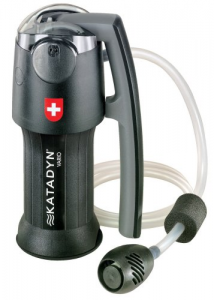
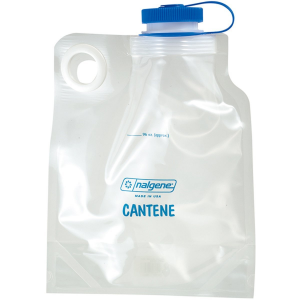
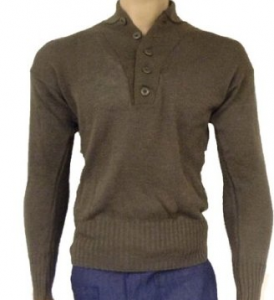

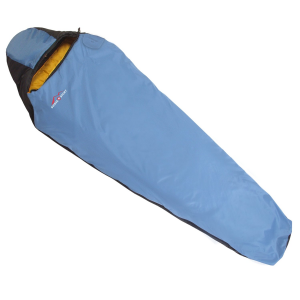
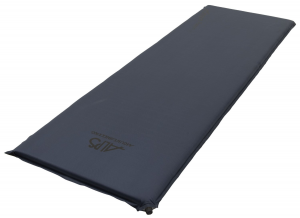
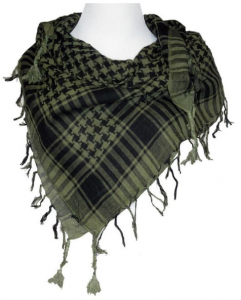
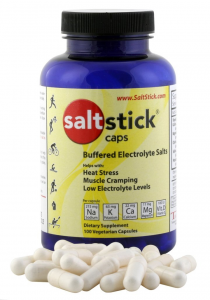
The most important method for desert survival is to find the water, but in the desert, it is difficult to search for water. How dose others be a replacement?
ReplyDelete